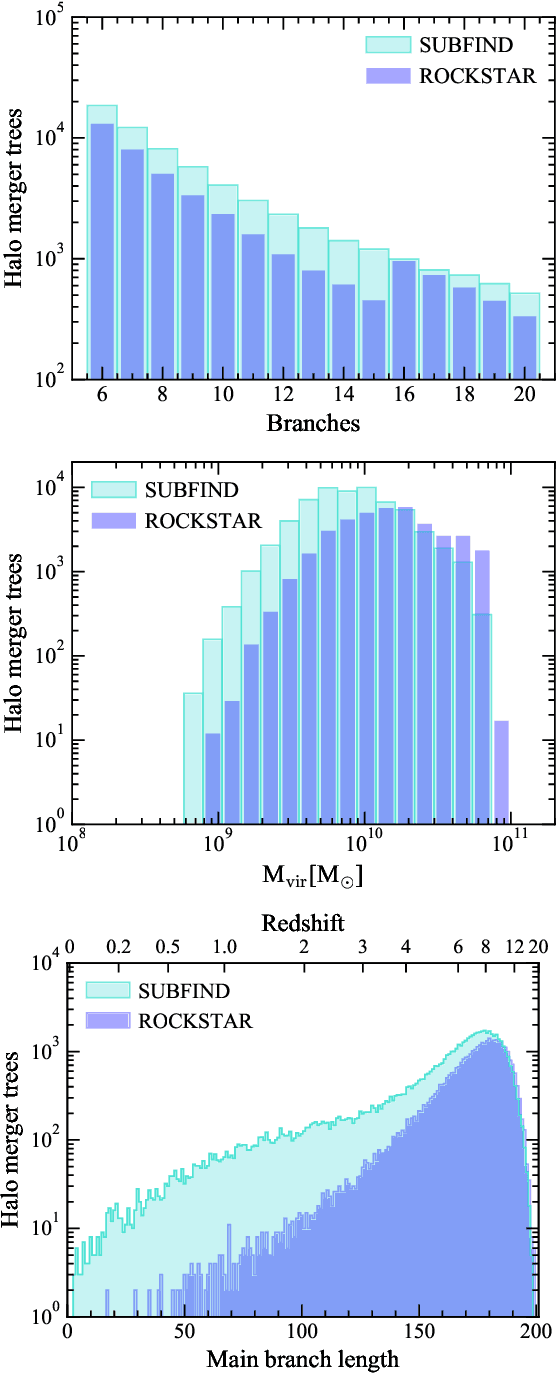A deep learning approach to halo merger tree construction
Paper and Code
May 31, 2022



A key ingredient for semi-analytic models (SAMs) of galaxy formation is the mass assembly history of haloes, encoded in a tree structure. The most commonly used method to construct halo merger histories is based on the outcomes of high-resolution, computationally intensive N-body simulations. We show that machine learning (ML) techniques, in particular Generative Adversarial Networks (GANs), are a promising new tool to tackle this problem with a modest computational cost and retaining the best features of merger trees from simulations. We train our GAN model with a limited sample of merger trees from the EAGLE simulation suite, constructed using two halo finders-tree builder algorithms: SUBFIND-D-TREES and ROCKSTAR-ConsistentTrees. Our GAN model successfully learns to generate well-constructed merger tree structures with high temporal resolution, and to reproduce the statistical features of the sample of merger trees used for training, when considering up to three variables in the training process. These inputs, whose representations are also learned by our GAN model, are mass of the halo progenitors and the final descendant, progenitor type (main halo or satellite) and distance of a progenitor to that in the main branch. The inclusion of the latter two inputs greatly improves the final learned representation of the halo mass growth history, especially for SUBFIND-like ML trees. When comparing equally sized samples of ML merger trees with those of the EAGLE simulation, we find better agreement for SUBFIND-like ML trees. Finally, our GAN-based framework can be utilised to construct merger histories of low and intermediate mass haloes, the most abundant in cosmological simulations.
 Add to Chrome
Add to Chrome Add to Firefox
Add to Firefox Add to Edge
Add to Edge